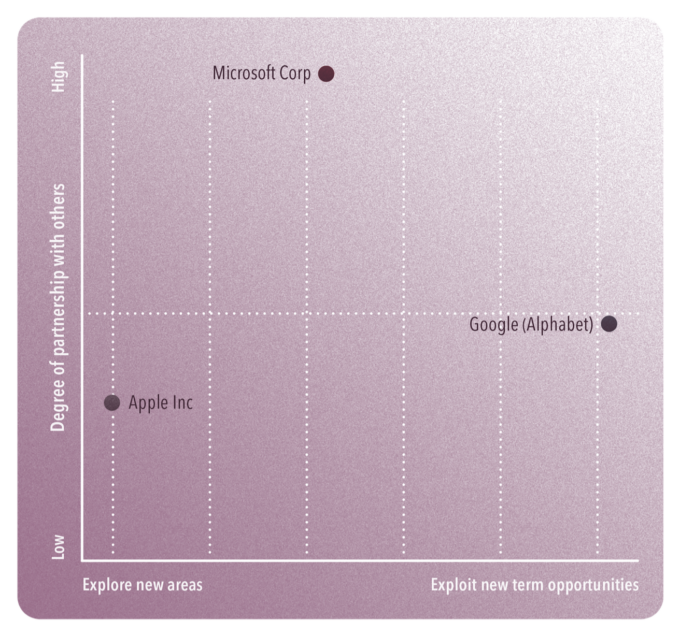
Why leaders should learn to value the boundary spanners
Entrepreneurial talent who work with other teams often run into trouble with their managers. Here are ways to get the most out of your ‘boundary spanners’...
Audio available

by Howard H. Yu Published May 11, 2023 in Audio articles • 6 min read •

There is seemingly endless speculation about ChatGPT and how it’s “destroying” writing. If you haven’t tried it, you should. It’s basically an AI-based writing assistant that can help you to generate content on any topic. Ask any question, and you’ll receive a composed answer –whether it be a short paragraph or a long essay, the choice is yours.
Alphabet, the parent company of Google, must be thinking that it can’t let this become its “Kodak moment”: ChatGPT must not be allowed to replace the money-making machine that is the Google search engine.
Meanwhile, Microsoft must be thinking that ChatGPT – in which it has invested billions of dollars – better not go the way of Siri, a cute invention that the public seemed at first to love but which ultimately proved rather useless. Apple must be wondering why and how it has been sidelined in the AI race while Meta has no time to think of anything else except fixing its own metaverse.
None of this is surprising. As seen in our latest readiness ranking, Google (#1) and Microsoft (#2) are the most future-ready companies in the technology sector. A clash of these two titans in 2023 is inevitable. Let’s me be clear, Microsoft doesn’t own ChatGPT outright but it is a major investor in Open AI, the company that created the algorithm. As a result, Microsoft is working on a new version of its search engine Bing which will have a chatbot interface. It will use GPT-4, the next generation of machine-learning models, to generate human-like sentences to respond to search queries. No more displaying pages and pages of websites. No more clicking and looking at our tiny screens. Instead, there will be real-time information with sources cited for its answers. Direct and straightforward.

The financial deal that Microsoft struck with Open AI was complex and hard to understand, even for seasoned venture capitalists. But the bottom line is that Microsoft has the exclusive right to reuse Open AI’s chatbot technology in all its commercial products. And CEO Satya Nadella has made clear to every product team that they need to find ways to integrate GPT-powered tools. The word processor, PowerPoint, Outlook, LinkedIn, and other cloud-based functions will become AI-enabled.
So, what’s to stop Microsoft’s latest project suffering the same fate as Apple’s Siri? After an initial splash, will it follow the path of Watson, IBM’s disastrous AI initiative in the medical sector? Will it fail to live up to its technological promise? The answer lies as much in the technology itself as in the organizational context.
Remember Siri’s introduction on the iPhone 4S? That was a magical Apple feature. Instead of having to dig through settings and apps, you could just talk to your iPhone. Customers loved it. Three days after the iPhone 4S launched, Apple had sold four million devices, making it the fastest-selling iPhone ever.
Inevitably, rivals soon emerged. There was S Voice, the forgettable voice assistant from Samsung that was superseded by the similarly unremarkable Bixby. Then came Google Now, which was a bit more polished. But Google Assistant quickly showed that the time for Now was in the past. Amazon then entered the fray with the voice assistant Alexa, contained in a tubular speaker known as the Echo. Alexa and Google Assistant quickly overtook the competition by allowing users to conveniently control a wide range of home devices, such as smart lightbulbs, TVs with Netflix capabilities, and thermostats. Affordability was also a factor in their success.
No more displaying pages and pages of websites. No more clicking and looking at our tiny screens. Instead, there will be real-time information with sources cited for its answers
When we look back, it is easy to see that Siri had a big problem. It failed to maintain momentum. The things that made Apple’s digital assistant so popular in 2011, like setting alarms and taking notes, were never improved upon very much. By the time Apple introduced SiriKit in 2016, allowing outside developers to create new capabilities for Siri, it was too late. It hasn’t led to any meaningful developer interest. Meanwhile, Amazon’s Alexa has 25,000 “skills” built by third-party developers, and Google Assistant has more than a million “actions”, which include commands that Google has programmed into the digital assistant as well as features built by third parties. In June 2017, The Wall Street Journal predicted that Apple’s HomePod would struggle to compete and was likely to become a distant third in the home speaker market. They were right.
One thing we have learned is that an emerging technology requires broad adoption to gain traction. Apple is notoriously closed in its product development approach; it prefers to build a walled garden to control the customer experience. Even when it opens its ecosystem, control is rampant. Google and Amazon are the opposite, as demonstrated by Google’s Android and Amazon’s AWS. They prefer to open up things quickly so that outside parties can create new usages. Meanwhile, the core group concentrates on making the back end infrastructure more robust and more accommodating of newly discovered functions.
So, where does Microsoft stand? At IMD, we have built an algorithm to look at the company’s behavior. Think of this as big-text analytics powered by AI. We want to score companies, in this case their inclination towards partnership and their willingness to wade into the unknown.
To compile the graph, we downloaded articles from The Wall Street Journal, New York Times, Financial Times, and other business news sources over the past decade. We also identified top-tier press release distribution outlets and looked at corporate press releases from the same 10-year period. We fed the data into an algorithm, which considered what different companies represent and how the business community understands their behaviors. By putting all this information together, we have gained a sense of how things are going for each company.

What jumped out is that Microsoft is likely to avoid the kind of strategic mistakes made by Apple. It is not enough for a company to think deeply about customer experience by itself; it is necessary to figure out how to enable third parties to produce quality functionality to sustain growth momentum. Success depends on two things: one is exploring new frontiers, but also exploiting what you have already mastered. If there are too many moonshots, a company can eventually get distracted – but if it only concentrates on exploiting near-term opportunities, the innovation pipeline will eventually run dry.
What is interesting is how Microsoft is striking a balance on this vertical dimension while also maintaining a strong inclination to partner with others.
Google is not sitting still. It also announced that it was rolling out a ChatGPT-like product called Bard, claiming that it would do more to leverage its AI in products. With Google’s impressive AI talent and computing power, there is a high likelihood that it will create powerful alternatives to some of OpenAI’s products. The ultimate danger is that Google’s clear attempts to replicate OpenAI could tarnish its reputation among experts in the field. And if it fails? That would prove detrimental and impede its long-term success.
For the first time in history, we might be on the brink of a search engine revolution.
You can read more about how the rankings are calculated at www.imd.org/future-readiness-indicator/home.
Jialu Shan, Zuriati Balian, and Lawrence Tempel contributed to this article.

LEGO® Chair Professor of Management and Innovation at IMD
Howard Yu, hailing from Hong Kong, holds the title of LEGO® Professor of Management and Innovation at IMD. He leads the Center for Future Readiness, founded in 2020 with support from the LEGO Brand Group, to guide companies through strategic transformation. Recognized globally for his expertise, he was honored in 2023 with the Thinkers50 Strategy Award, recognizing his substantial contributions to management strategy and future readiness. At IMD, Howard directs the Strategy for Future Readiness program.

July 3, 2025 • by Eric Quintane in Audio articles
Entrepreneurial talent who work with other teams often run into trouble with their managers. Here are ways to get the most out of your ‘boundary spanners’...
 Audio available
Audio available
June 24, 2025 • by Jerry Davis in Audio articles
The tech broligarchs have invested heavily in Donald Trump but are not getting the payback they bargained for. Do big business and the markets still shape US government policy, or is the...
 Audio available
Audio available
June 19, 2025 • by David Bach, Richard Baldwin, Simon J. Evenett in Audio articles
As governments lock horns in our increasingly multipolar world, long-held assumptions are being upended. Forward-looking executives realize the next phase of globalization necessitates novel approaches....
 Audio available
Audio available
June 2, 2025 • by George Kohlrieser in Audio articles
Leadership Honesty and courage: building on the cornerstones of trust by George Kohlrieser Published 17 April 2025 in Leadership • 5 min read DownloadSave Trust is the bedrock of effective leadership. It...
 Audio available
Audio availableExplore first person business intelligence from top minds curated for a global executive audience